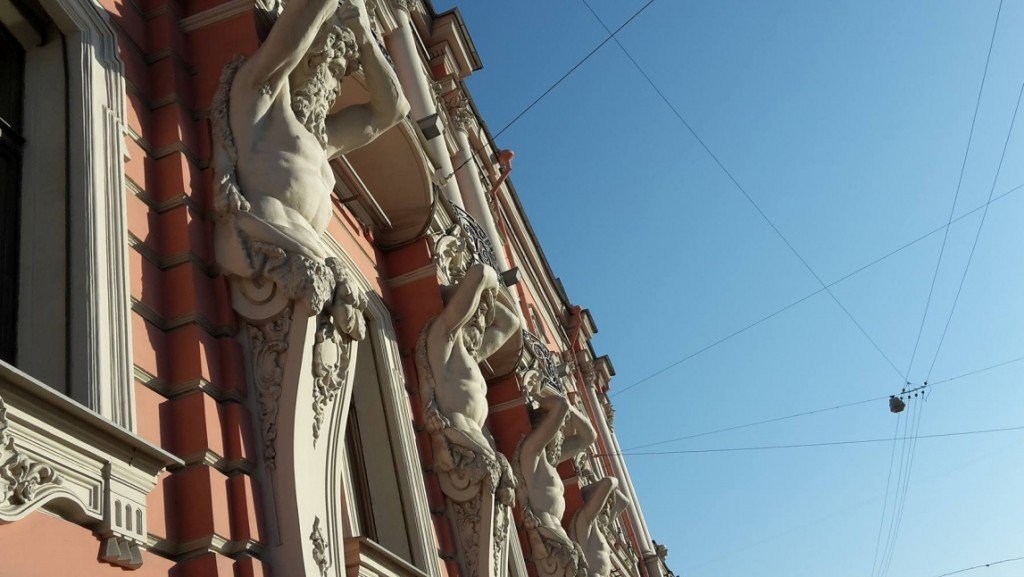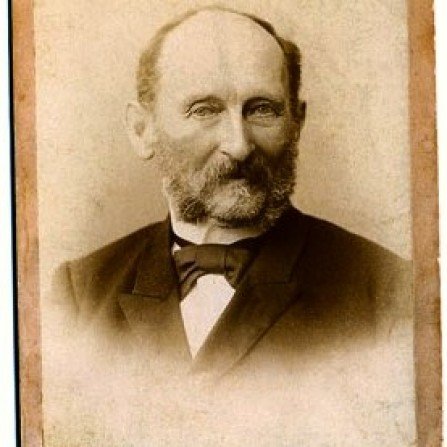Who was David Jensen? He was born as the son of a carpenter in Copenhagen on November 19th 1816 and received his education as a sculptor at the Royal Danish Academy of Fine Arts, being awarded both the small and large silver medal, as well as the small gold medal for his accomplishments. He was a student of the German-born Danish sculptor Hermann Ernst Freund from 1832-1840, after which he worked for the Danish sculptor Herman Wilhelm Bissen until 1841, helping complete the late Freund’s masterpiece, the Ragnarok Frieze. He also briefly served under the internationally famous Danish sculptor Bertel Thorvaldsen, working on the frieze depicting Jesus’ entry into Jerusalem which can be found inside the cathedral of Copenhagen, Vor Frue Kirke.
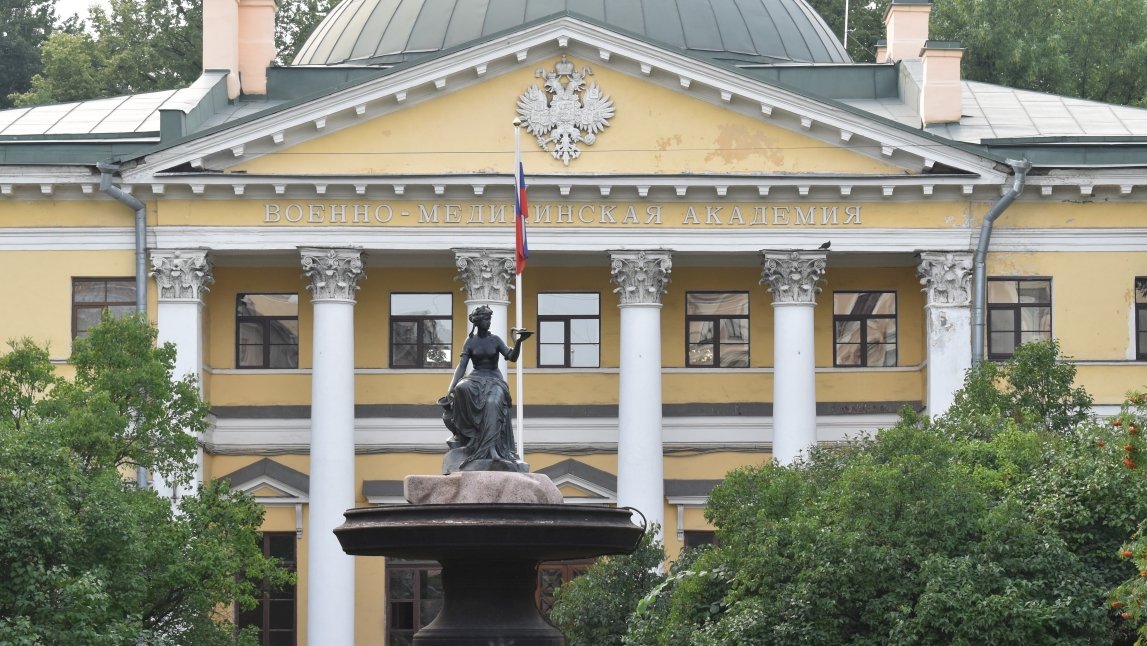
Sculpture from 1871 depicting the Greek goddess of good health, Hygeia. The sculpture is placed on top of a fountain which is located in front of the S. M. Kirov Military Medical Academy.
Based on a recommendation from his former master Thorvaldsen, Jensen was offered employment as a sculptor of the interior decorations at the Mariinsky Palace in St. Petersburg, which was a present from Tsar Nicholas I to his daughter Grand Duchess Maria Nikolaevna in celebration of her marriage to Maximilian, Duke of Leuchtenberg. Jensen accepted the offer in 1841 and moved to what was then the capital of Russia. Here he quickly found fame and fortune not just as an artist; creating everything from caryatids and reliefs to statues, sculptures, and fountains; but also as a teacher at a private art school from 1841 to 1847. He even experienced success as a businessman and inventor, opening the first terracotta factory in Russia in 1845 inventing a new kind of terracotta that could survive the harsh climate of northwest Russia.

David Jensen’s terracotta factory, the first in Russia, opened in 1845 on Kamennoostrovsky Prospekt 47. It was at this location that Jensen along with his workers would create many of the artworks that adorn various buildings in St. Petersburg. The factory doesn’t exist today and in its place can be found among other things a jewelry store and a sushi restaurant.
His new life was accompanied by the addition of a patronym to his name – in Russia he would be known as David Ivanovich Jensen. In 1845 he married Anna Caroline Steinberger, the daughter of a Russian instrument maker. In 1868 the scope and quality of his work earned him the title as professor at the St. Petersburg Art Academy. This was an honorary title which did not imply teaching responsibilities.
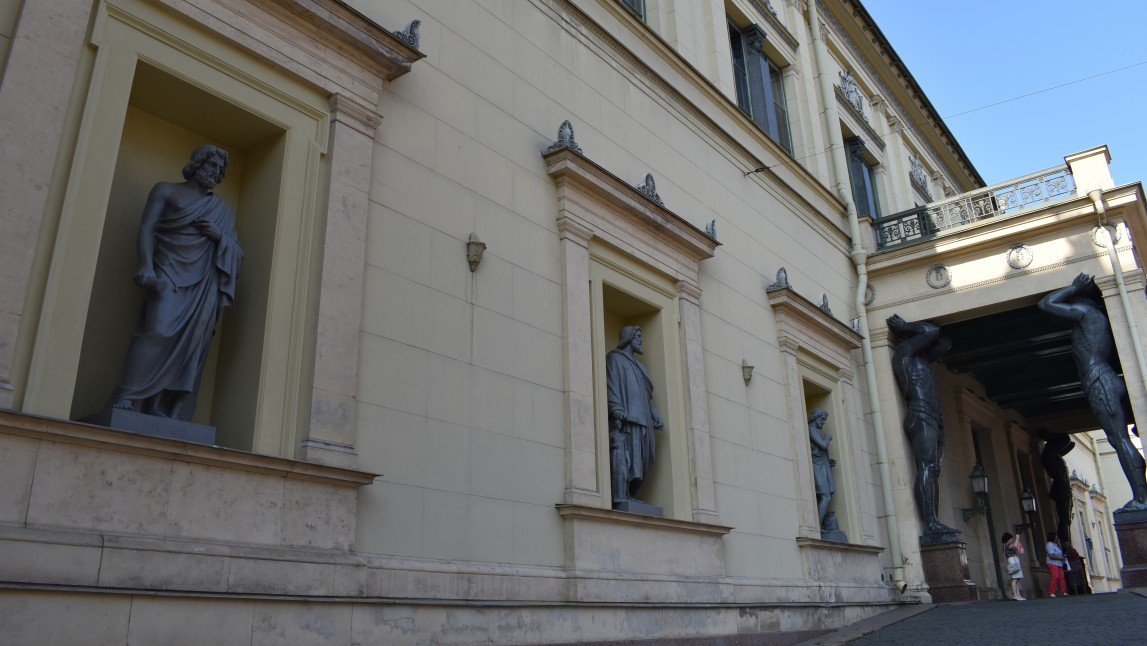
The New Hermitage was the first building built in St. Petersburg with the purpose of housing a museum collection. Emperor Nicholas I invited the German architect Leo von Klenze to design the building, which was then erected in 1842-1851 under the supervision of local architects Nikolay Yefimov and Vasily Stasov. The statues and bas-reliefs on the facade depicting famous artists, architects, and sculptors were made by David Jensen. Among these the Italian engraver Raffaello Sanzio Morghen, the Greek mythological artist and craftsman Daedalus (perhaps most famous for being the father of Icarus), and the German art historian and archaeologist Johann Joachim Winckelmann.

The statue Navigation was in 1891 placed on top of the Boat House at the Peter and Paul Fortress in St. Petersburg. Besides its artistic qualities, the statue has another interesting feature: The words “Property of D. Jensen” is written on it, displaying an early example of the artist claiming copyright on his or her work.
Although the greatest part of Jensen’s works of art is in St. Petersburg, his decorative art can also be found in Moscow, Riga, Kiev, and Helsinki, which at that time belonged to the Russian Empire.
Jensen continued working into his seventies and died in St. Petersburg on the 10th of January 1902. He was buried at the Smolensky Lutheran Cemetery on Dekabristov Island. The exact location of his grave is unknown, partly because of the destruction of parts of the cemetery during the Soviet period, partly because of a general state of disrepair that has rendered many graves unrecognizable.

The two fountains in the Rumyantsev SkyPark are a testament to the versatile nature of David Jensen’s work. While the majority of his work consisted of sculptures, bas-reliefs, and statues, he also dazzled in other fields. The fountains flank an obelisk raised in honour of Field Marshal Pyotr Rumyantsev, after whom the park is named.
Considering the scope and quality of his work as well as the high demand, a final question remains to be answered: Why is David Jensen and his work almost totally unknown today? After all his work can be seen all over St. Petersburg decorating some of its most famous buildings. He is briefly mentioned in the Weilbach Dansk Kunstnerleksikon [Danish Encyclopedia of Artists, red.] along with a quote from the Russian artist and art historian Igor Grabar, saying that “the work of Jensen seemed like decorative adornments that didn’t really enter the service of the architectonic idea.” Despite of this rather negative assessment the fact remains that Jensen was an exceptionally popular artist in his days and that his artistry is part of what makes St. Petersburg such a beautiful city. The different oeuvres presented in this article do not represent an exhaustive list of David Jensen’s work in St. Petersburg, which an estimated guess is around 80 in total.
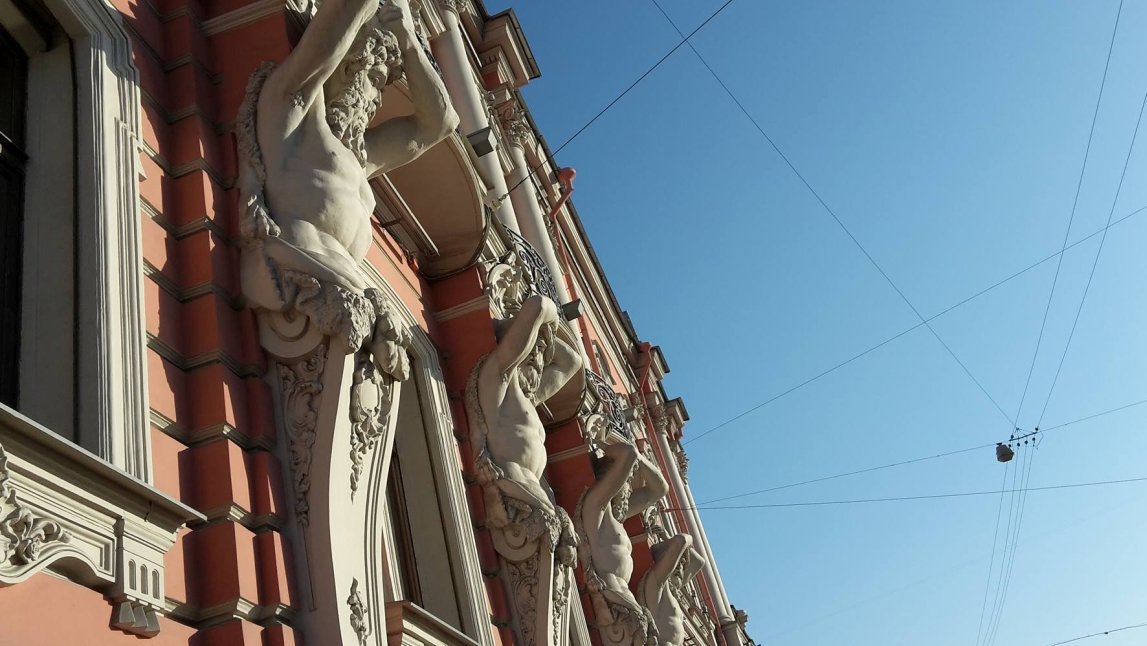
The Beloselsky-Belozersky Palace has undergone many changes in its outer appearance since its initial construction in 1747. The last extensive overhaul of the palace was initiated by its owner Elena Pavlovna Beloselskaya Belozerskaya and carried out in 1847-1848 by court architect Andreas Stackenschneider. As part of this reconstruction David Jensen was commissioned to create the athletes adorning the facade.
One possible explanation for Jensen’s obscurity lies in the political climate of Russia at the turn of the century. A few years after his death the country would experience great turmoil as it transitioned from Tsardom to socialism. This new political system brought with it a new view on art and its function in society as well as an insistent disregard for what had come before. Thus in Russia his name was soon forgotten.
In Denmark David Jensen is seemingly no more known than in Russia. Since he left his home country at the age of 25, the vast majority of his life was spent in Russia where he created some of his most important work. It’s no wonder then that he did not leave a greater mark on Danish art history.
What ever the reason for his lack of recognition is, the fact remains that he for half a decade was an influential part of what made the city of St. Petersburg what it is today. To have contributed to the aesthetic qualities of what is by many considered one of the most beautiful cities in the world is no small feat and we at Danish Cultural Institute in Russia hope, that we through this article have shed some light on the part played by our forgotten countryman David Jensen.
Written by Kristoffer Møllegaard
Danish Cultural Institute would like to acknowledge the indispensable help of Svetlana Wolder in researching the subject of this article.
